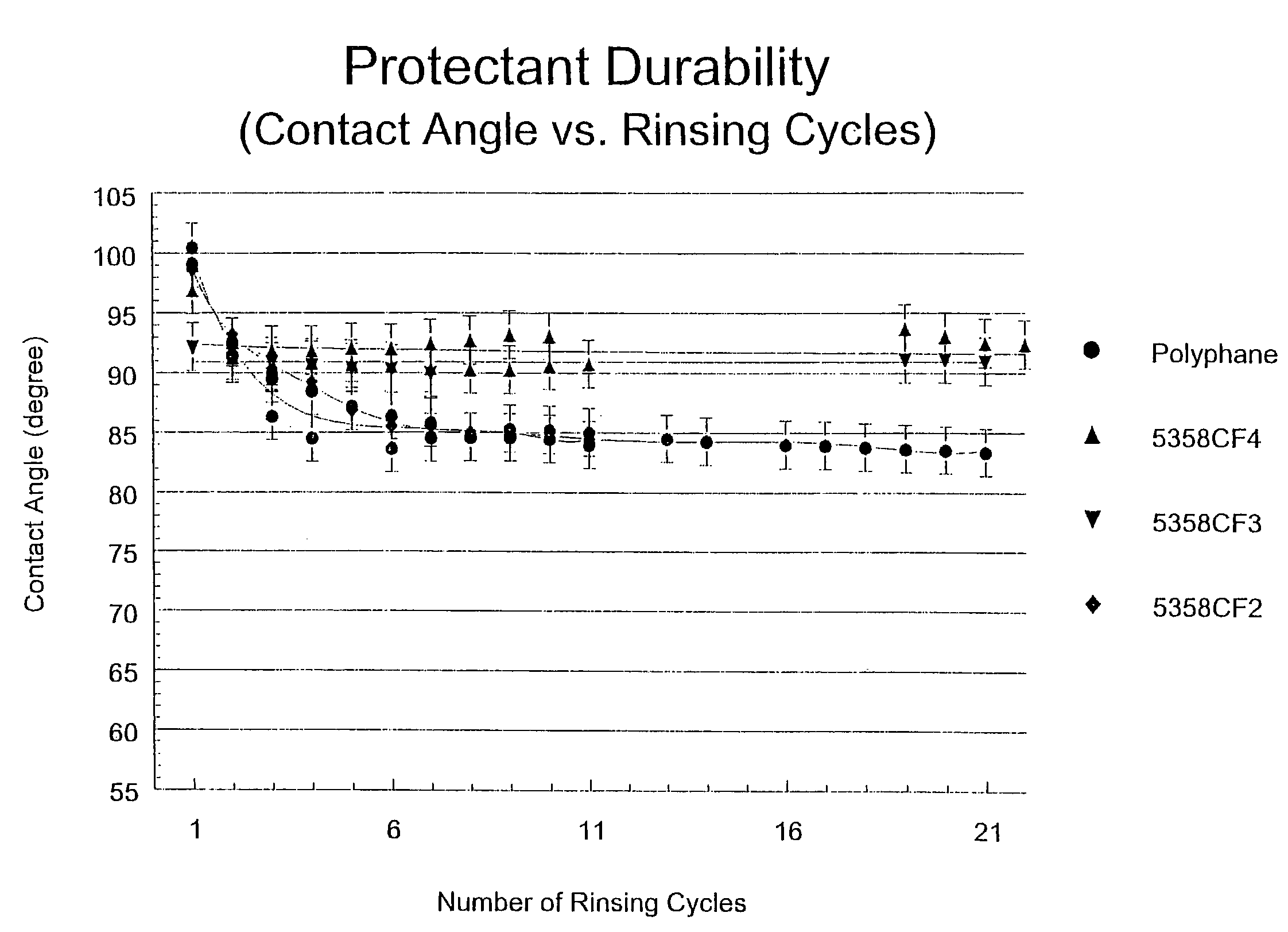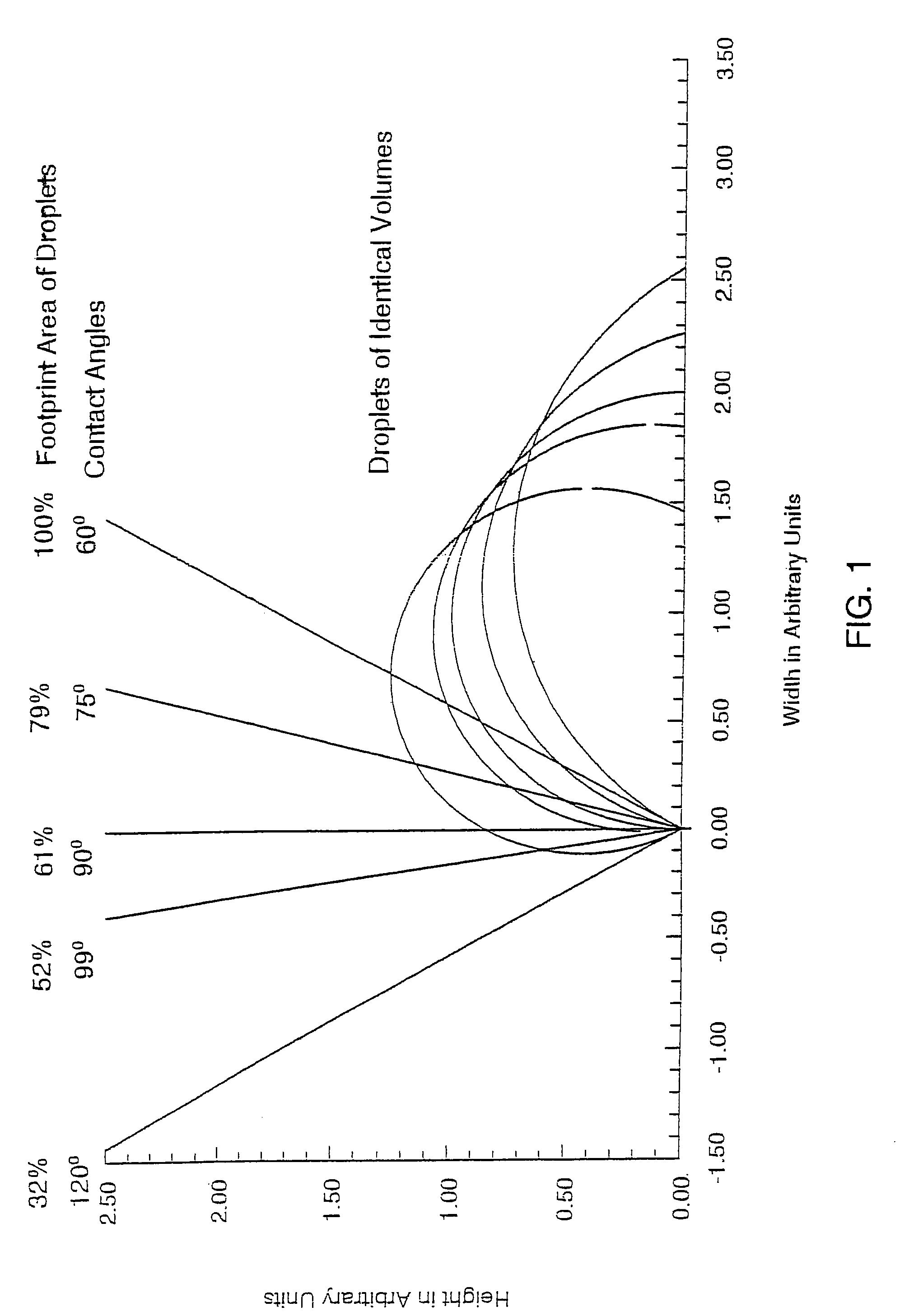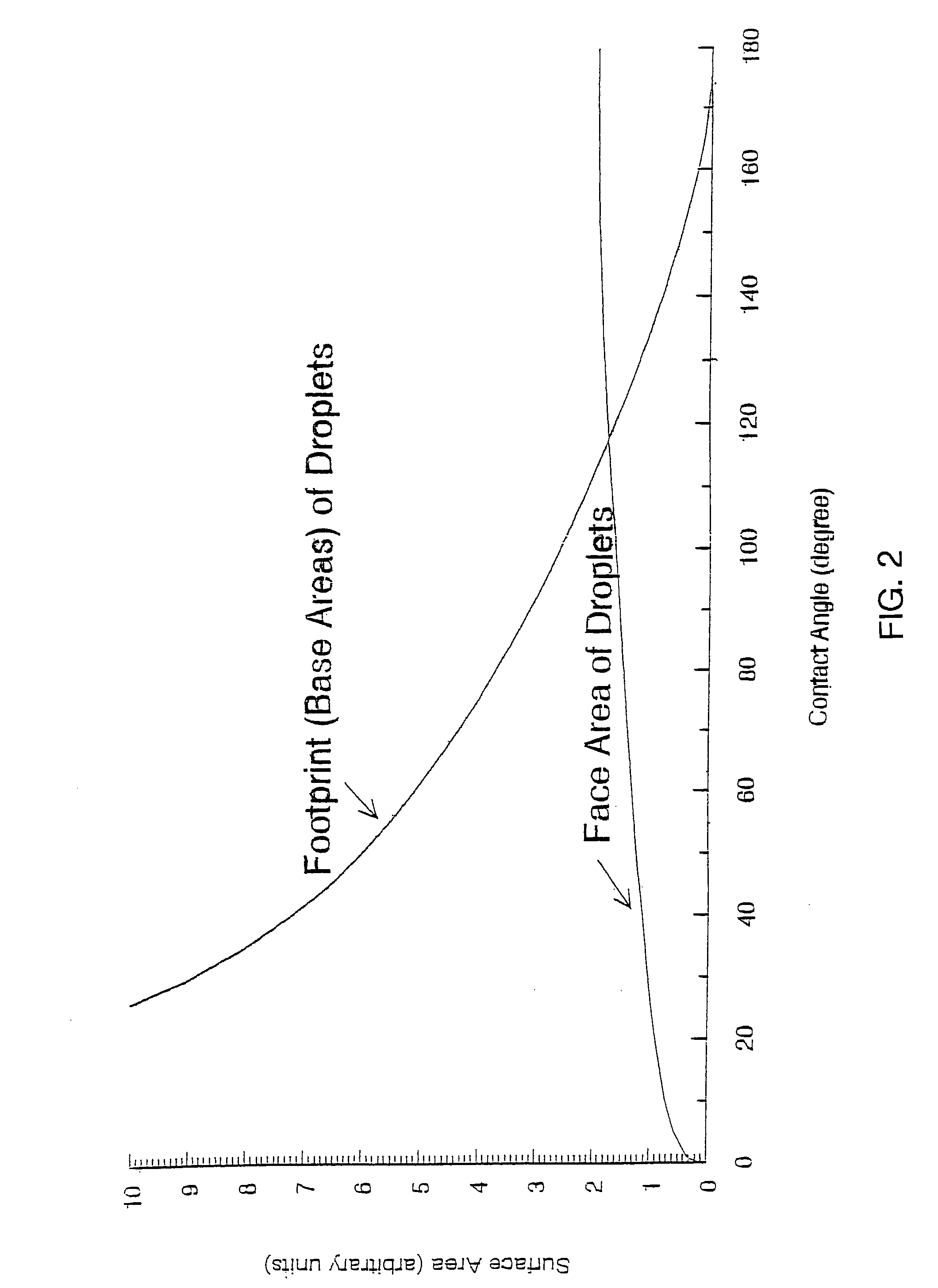Amine-functionalized polyisobutylenes for improved hydrophobizing microemulsions
a technology of hydrophobic microemulsion and amine, which is applied in the direction of other chemical processes, liquid displacement, separation processes, etc., can solve the problems of greasy film left on the windshield, nagy et al. cannot anticipate nor teach or suggest the instant amine-functionalized polyisobutylene or compositions including the same, etc., to improve the effect of contact angle, and improve the appearance of the target surfa
- Summary
- Abstract
- Description
- Claims
- Application Information
AI Technical Summary
Benefits of technology
Problems solved by technology
Method used
Image
Examples
example 1
[0043]A 1000-mL round bottom flask, equipped with magnetic stirrer, condenser, and dropping funnel, was charged with 91 g (0.252 mol) of TPC-535 and 100 mL of CHCl3. A solution of 48 g (0.278 mol) of m-chloroperoxybenzoic acid in 600 mL of CHCl3 was then added over a period of ˜30 min at 25° C. The charge was stirred for another 4 hours and transferred to a separatory funnel; the excess peracid was destroyed by washing with 200 mL of 10% sodium sulfite. The m-chlorobenzoic acid was extracted by washing three times each with 200 mL of 5% sodium bicarbonate and with distilled water. The organic layer was separated and dried with anhydrous MgSO4; the solvent was removed by distillation on a rotavap. The final product was identified as Formula (2). The conversion of olefin to epoxy end functionality was followed by 1H-NMR spectroscopy following the 4.58 and 4.78 ppm resonances associated with the —CH—CH2, respectively. Molecular weights were determined by GPC using a calibration made wi...
example 2
[0044]A 1000-mL round bottom flask, equipped with magnetic stirrer, condenser, and dropping funnel, was charged with 90.4 g (0.249 mol) of TPC-535 and 100 mL of CHCl3. A solution of 48 g (0.278 mol) of m-chloroperoxybenzoic acid in 600 mL of CHCl3 was then added over a period of 30 min at 25° C. The charge was stirred for another 47 hours and transferred to a separatory funnel; the excess peracid was destroyed by washing with 200 mL of 10% sodium sulfite. The m-chlorobenzoic acid was extracted by washing three times each with 200 mL of 5% sodium bicarbonate and with distilled water. The organic layer was separated and dried with anhydrous MgSO4; the solvent was removed by distillation on a rotavap. The final product was identified as Formula (2). The conversion of olefin to epoxy end functionality was followed by 1H-NMR spectroscopy following the 4.58 and 4.78 ppm resonances associated with the —CH—CH2, respectively. Molecular weights were determined by GPC using a calibration made ...
example 3
[0045]A 1000-mL round bottom flask, equipped with magnetic stirrer, condenser, and dropping funnel, was charged with 67.0 g (0.185 mol) of TPC-535 and 100 mL of CHCl3. A solution of 48 g (0.278 mol) of m-chloroperoxybenzoic acid in 500 mL of CHCl3 was then added over a period of 30 min at 25° C. The charge was stirred for another 92.5 hours and transferred to a separatory funnel; the excess peracid was destroyed by washing with 200 mL of 10% sodium sulfite. The m-chlorobenzoic acid was extracted by washing three times each with 200 mL of 5% sodium bicarbonate and with distilled water. The organic layer was separated and dried with anhydrous MgSO4; the solvent was removed by distillation on a rotavap. The final product was identified as Formula (2). The conversion of olefin to epoxy end functionality was followed by 1H-NMR spectroscopy following the 4.58 and 4.78 ppm resonances associated with the —CH—CH2, respectively. Molecular weights were determined by GPC using a calibration mad...
PUM
| Property | Measurement | Unit |
|---|---|---|
| colloidal diameter | aaaaa | aaaaa |
| colloidal diameter | aaaaa | aaaaa |
| contact angle | aaaaa | aaaaa |
Abstract
Description
Claims
Application Information
 Login to View More
Login to View More - R&D
- Intellectual Property
- Life Sciences
- Materials
- Tech Scout
- Unparalleled Data Quality
- Higher Quality Content
- 60% Fewer Hallucinations
Browse by: Latest US Patents, China's latest patents, Technical Efficacy Thesaurus, Application Domain, Technology Topic, Popular Technical Reports.
© 2025 PatSnap. All rights reserved.Legal|Privacy policy|Modern Slavery Act Transparency Statement|Sitemap|About US| Contact US: help@patsnap.com



